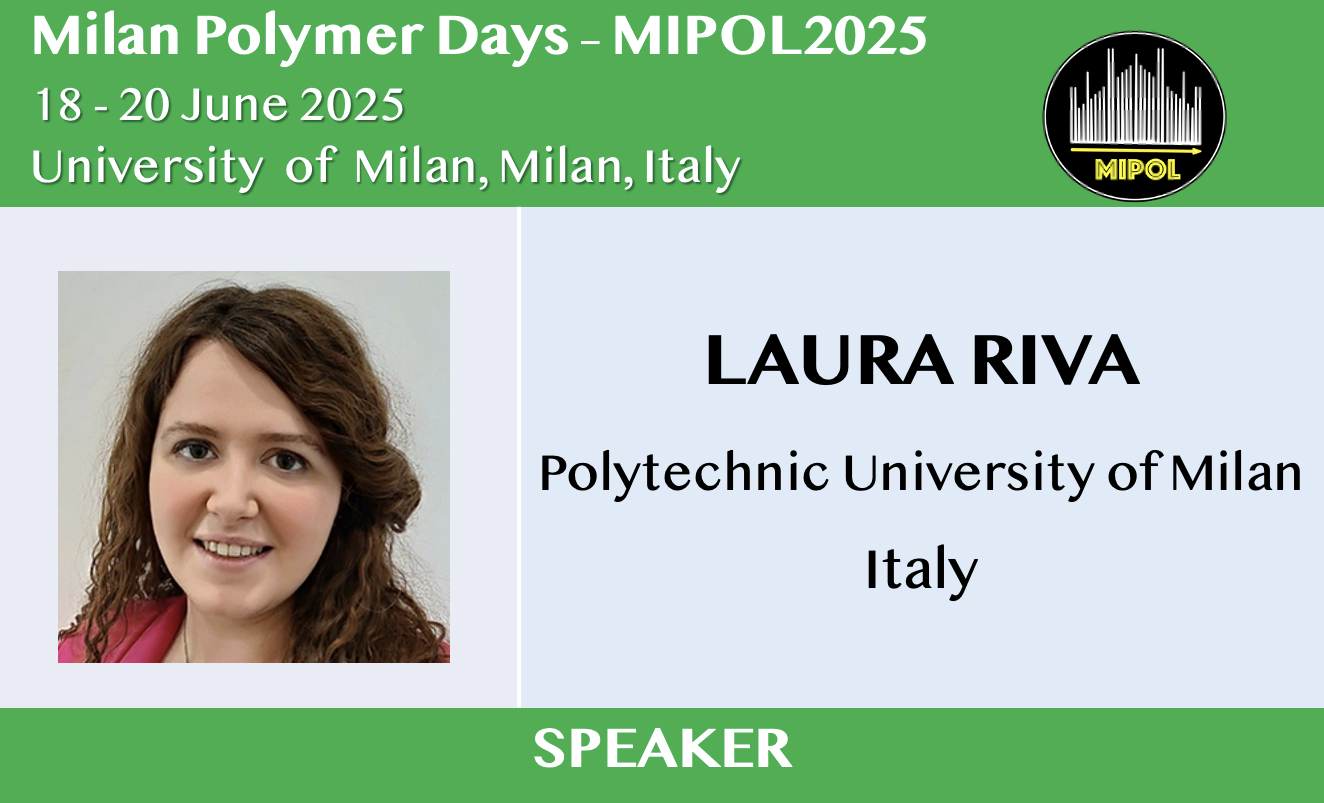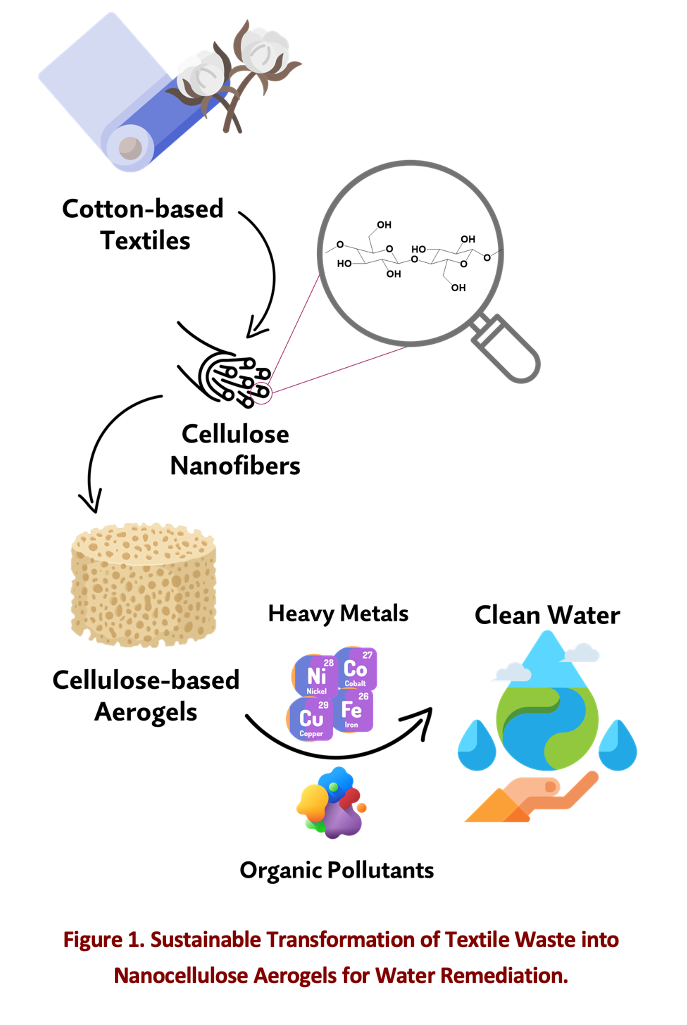Turning textile waste into high-performance nanostructured cellulose-based aerogels for clean water
Abstract

The upcycling of textile waste into high-performance nanocellulose-based aerogels represents a sustainable and innovative approach for water remediation. The textile industry is a significant contributor to water pollution, releasing harmful dyes and heavy metals into aquatic ecosystems, necessitating efficient and eco-friendly purification strategies [1]. This study explores the production of nanocellulose-based aerogels derived from recycled cotton-based textiles through controlled oxidation and functionalization processes, such as TEMPO-mediated oxidation [2]. These aerogels exhibit high porosity and surface area, making them ideal candidates for the adsorption of heavy metal ions (Cu²⁺, Fe³⁺, Pb²⁺, Ni²⁺) and organic contaminants.
A systematic pre-treatment of textile waste, including chemical purification and fibrillation, ensures the extraction of high-quality cellulose nanofibers (CNFs), which are then included as building-block for the production of aerogels via freeze-drying and thermal treatment [3]. The resulting materials demonstrate excellent adsorption capacities, efficiently capturing and removing pollutants from contaminated water. Structural and chemical characterizations confirm the aerogels' functionalization, stability, and adsorption efficiency, reinforcing their potential for large-scale application.
These findings highlight the viability of nanocellulose-based aerogels as a circular and eco-friendly solution for wastewater treatment, addressing environmental concerns while valorizing textile waste. This approach contributes to the development of a sustainable water purification strategy that aligns with circular economy principles and promotes resource efficiency in the textile industry.

References
- T. Sathasivam, S. Sugiarto, M. P. Y. Yew, X. Y. Oh, S. Y. Chan, B. Q. Y. Chan, M. J. Tim, D. Kai Nanoscale 2024, 16, 14168.
- A. Isogai, T. Saito, H. Fukuzumi Nanoscale. 2011, 3, 71.
- L. Riva, N. Pastori, A. Panozzo, M. Antonelli, C. Punta Nanomaterials 2020, 10, 1570.
Acknowledgments
The authors gratefully acknowledge the funding by EU of CASCADE project (LIFE-2022-SAP-ENV–LIFE-PJG Action, LIFE22-ENV-IT-LIFE – Project Grant Management Number 101113942.

